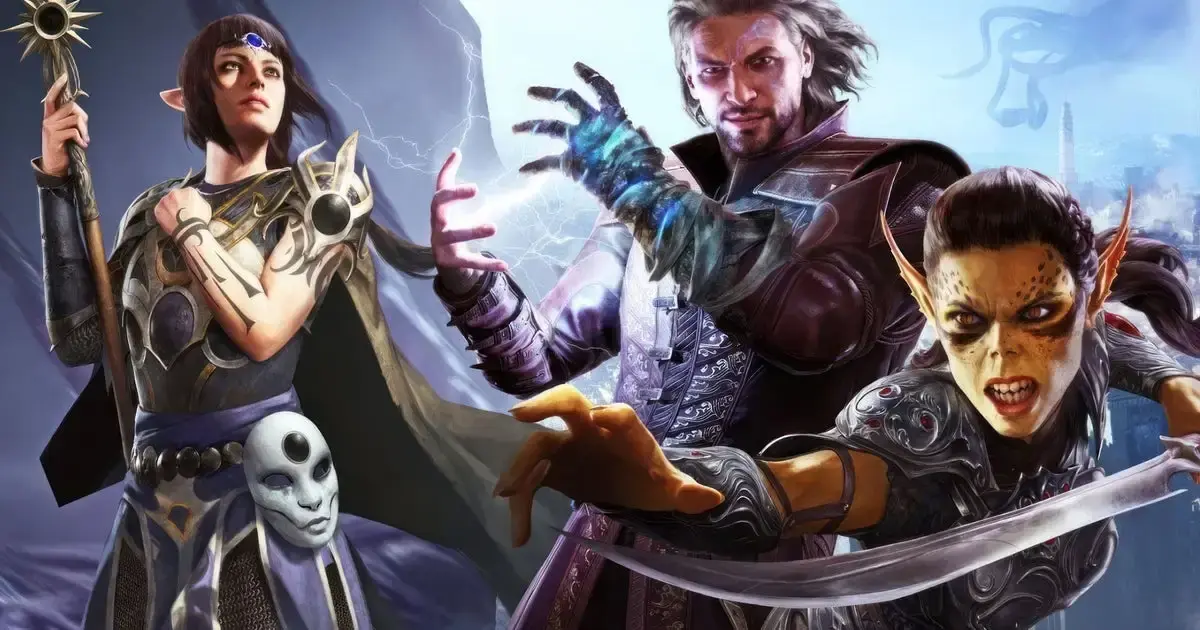Repacks make installing the game with its bazillion DLCs a breeze these days.
- 6 Posts
- 247 Comments
Each Sims game is quite different. The biggest difference is between Sims 1 and 2 simply due to the change from isometric 2D to 3D graphics. Not the first game in the genre to have 3D graphics and they weren’t even particularly impressive for the time nor good compared to its competitor, but the charming animations and attention to detail make it a far more enjoyable experience than the comparatively sterile predecessor. Sims 2 ended up becoming an evergreen with very long legs, to the point that people are still playing it, although it helped that EA distributed the complete version with all add-ons (the game is older than the term DLC) for free for a while (you can still find it if you know where to look).
Sims 3 was fundamentally different from Sims 2. Gone were the isolated homes of the predecessor (initially in Sims 2, you couldn’t even see your neighbors’ homes unless you were on the map screen; later they added in low-res stand-ins) and instead, it’s an open world game where you can see your Sim commute to work in real-time. Neighbors can be visited without going through a loading screen - it all feels more organic as a result. Customization saw a huge upgrade as well, the AI was improved, etc. Sounds nice in theory, but the problem was that it was too ambitious for PCs of the time. This series has traditionally attracted non-gamers who don’t deeply upgrade their machines all that often and instead play on laptops bought for homework or old rigs inherited from big brothers. Sims 1 ran on a toaster, Sims 2 on a pizza oven with some kind of GPU grafted to it - whereas Sims 3 was one of the most demanding games of its time in order to facilitate gameplay changes that few people actually asked for and rounded, bloated looking Sims that are somewhat offputting. It was still a massive success and a huge hit with modders as well, but Sims 2 remained popular due to its more focused nature, the fact that it ran on anything and the fact that it was complete with a massive library of add-ons that took years to be replicated in Sims 3.
Sims 4 reset the series back to Sims 2, but went too far initially, limiting player freedom in regards to neighborhood creation. Instanced homes returned, customization features and open world of Sims 3 were cut, the AI saw a massive improvements, Sims didn’t all look obese anymore, hardware requirements were modest again - but at the price of having incredibly intrusive DRM, an attempt to monetize the proud modding community and being very bare-bones in the beginning, requiring years of DLCs to reach feature-parity with Sims 2 and 3. IIRC, even pools - an absolutely essential part of Sims lore - were missing initially. All of the improvements to the building mechanics in particular were overshadowed by EA’s corporate nonsense. It’s come a long way since though. Just like with the predecessors, buying all DLC at once will make you poor - but the base game is free now and the actual intention is that you only buy the DLC that have features or items you care about. The modding scene is as vibrant as ever, making any non-feature DLC unnecessary anyway.
This series is an interesting and unique phenomenon. It’s a prime example of something that only ever truly works on PC. All of the many console, mobile and browser spinoffs and ports were nothing but mere blips on the radar, because fundamentally, it can only work on a platform as open as the PC. It primarily attracts female players who rarely play anything else, yet dive deep into modding and modifying every little aspect of these games like the most hardened PC nerds. It started out and still is in many ways a faksimile of ideal American suburbia, although enhanced by both some quite subversive humor and subverted by an astonishing level of player freedom that goes against the conformity of the real world - while at the same time replicating the fads, consumerism, cliques, feuds and other less wholesome aspects of the real world through its behemoth of a community. It’s ultimately a platform for individual creative expression and the worlds (both in-game and outside of it) that emerge as a result of it, a sandbox that was only ever bested by Minecraft, which literally broke everything down to its individual building blocks. Each game and its DLCs become more like car payments to seasoned players, something you pay for so that you can travel where you want to go, which in turn keeps the experience fresh, finances further development and prevents the community from getting stagnant as it has to learn to adapt to changes from the developers.
I’ll end this here. This wasn’t meant to turn into an essay and now my fingers hurt, because I typed all of this nonsense on a touchscreen.

 12·7 days ago
12·7 days agoI meant, the “no ads” thing was only feasible in the very beginning, when they were solely funded by venture capital.

 6·7 days ago
6·7 days agoThe thing is, Fury Road had a ton of visual effects as well. Almost every shot is full of them - but most people didn’t notice them, because they were so well executed and skillfully combined with real elements.

 2·7 days ago
2·7 days agoIt has always been only a signal for popularity. It’s the same on every other site with similar systems, including ones that have existed long before reddit. Even in the early 2000s, there were endless reminders that the upvote button was not meant as an “I agree” button, but that’s not how it’s being used.

 2·17 days ago
2·17 days agoThis makes this platform next to impossible to recommend to users outside of the US, since credit cards are very uncommon in e.g. Europe.

 8·17 days ago
8·17 days agoBRB, gonna learn Estonian.

 3·18 days ago
3·18 days agoIt’s “Numen: Contest of Heroes”. The game actually came out three years after Titan Quest.
This is hardly the most highly regarded game in the world and flew very much under the radar of most players, but I liked it quite a bit back then (even though I’m not the biggest fan of MMOs), to the point that I wrote a short review praising it on a (now defunct) forum I was frequenting at the time. This review (not mine) on Steam sums up why it feels so much like an MMO:
It looks like Titans Quest, but It plays very much like an MMO. Tab targeting, auto-attack, skills hotbar, camps of mobs you have to carefully pull, etc. If you aren’t in to MMO-style combat, you may not like this. The combat reminds me of Vanguard and several others. Fights are quicker though, mobs your level usually die in 10-15 seconds.
https://steamcommunity.com/profiles/76561198042628923/recommended/60800/
I’m curious as to how well it holds up. Perhaps I’ll reinstall it later today.

 2·18 days ago
2·18 days agoThis would kind of defeat the point, wouldn’t it?

 3·18 days ago
3·18 days agoThere was a hack and slash game set in Ancient Greece that very much felt like a single player MMO due to its mechanics. I think it came out a few years before Titan Quest and had a third person perspective. I’ll try to find it again later.

 11·23 days ago
11·23 days agoThe entire thing is horrible, but this is the worst part:
Fawzia says that a few months later, “they asked our family to kill us”. The authorities argued it would stop the shame they were bringing on the family. “They said, ‘We will help your son do it,’ but my family refused,” she says. “

 2·23 days ago
2·23 days agoI’m the kind of person who reads the source code of software I’m using at least some of the time (and modifies it on occasion), but I’m no genius and not qualified to notice a well-hidden backdoor or potentially fatal software bug - let alone issues with the design, construction or implantation of the hardware. I would never ever trust a brain implant or any device that interfaces directly with my brain.

 1·24 days ago
1·24 days agoThis old thing. Here’s a rebuttal from many years ago that has lost none of its relevance:
https://www.progressiveisrael.org/ben-gurions-notorious-quotes-their-polemical-uses-abuses/

 2·24 days ago
2·24 days agoAllied bombings killed more German civilians in WW2 than German bombings killed Allied civilians. Does this mean that the Allies were morally inferior to the Nazis on the Western front?
Have you considered that there is more to this than just numbers, namely intent?

 8·24 days ago
8·24 days agoDoes this look like ending three years ago?

 31·25 days ago
31·25 days agoWhy should I continue debating anyone who glorifies terrorists? What’s the point? But sure, applaud them for this nonsense.

 14·25 days ago
14·25 days agoSo many Indie developers are making the mistake of thinking they’ll be the next [insert currently successful one-man dev here] and banking their careers and life savings on it. 99.999% of them are not.

 21·25 days ago
21·25 days agoShould they, for example, abandon their residences as individuals
That’s not the issue. Hamas terrorists are doing far more than just going home in the evening to their families. Read this academic paper on Hamas’ use of human shields. It’s highly accessible, yet in-depth:
https://stratcomcoe.org/publications/hybrid-threats-hamas-use-of-human-shields-in-gaza/87
I seriously implore you to actually read it and not just dismiss it, because you dislike the title or because I’m the one recommending it to you.
Would this also have applied to, for example, Jewish resistance fighters during the holocaust?
Originally, I was prepared to write a lengthy reply to each of your points, but I’ll not waste my time any further with someone who has the sheer audacity of equating Hamas terrorists with Warsaw Ghetto resistance fighters. How dare you smear the legacy of these people in such a shameful way!

 42·25 days ago
42·25 days agoI’m suggesting that you don’t make up fictional dialogue.
I am not denying that kids are dying in this war. This has more to do with how Hamas are deliberately embedding themselves within civilians, preventing them from fleeing and using them as human shields than the IDF deciding to deliberately murder children. I am not aware of any other armed forces going even remotely to the same lengths to warn civilians as the IDF. They even invented the practice of roof-knocking, which Palestinians trust so much that they are standing within meters of a marked building in order to film its destruction.
Your second link does not support your claim that Israel said they are only killing Hamas.




I was about to say, you could do serviceable OCR on a 486, which illustrates just how little processing power is needed for conventional approaches compared to this hallucinating AI nonsense.